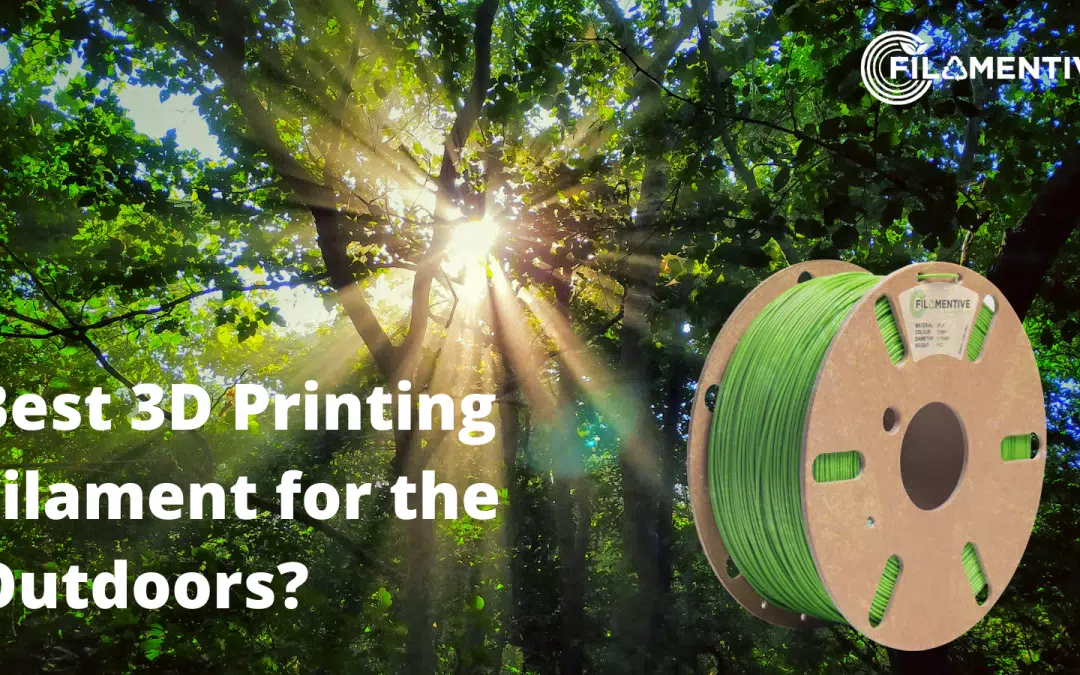With 3D printing increasingly used for end-use applications, there is growing demand for 3D printing materials that can withstand external environments, such as weathering and direct sunlight. As a provider of 3D printing filament, this article seeks to explore what makes a filament suitable for outdoors use, as well as reviews the most popular 3D printing materials with respect to UV stability.
What makes a 3D printing filament suitable for outdoors use?
When it comes to the suitability of a 3D printing material for outdoors use, the key aspect is the impact of UV light (i.e. sunlight) – the electromagnetic radiation the vast majority of us learn about in school science lessons!
UV light is potentially detrimental to 3D prints left or exposed to the outdoors because UV light tends to bleach the colour over time and can even cause the print to become brittle – impacting performance. The higher the amount of sunlight – and associated temperature increase – the higher the risk and rate of degradation of the 3D printing.
How UV resistant is PLA?
PLA is the most common filament for 3D printing – used by more than 95% of 3D printer users. It is used widely by both hobbyists and industry users to 3D print prototypes; certain PLA grades such as Tough PLA are also now unlocking opportunities to produce end-use parts made from PLA.
PLA is considerably UV resistant – however it is important to note that, as a bioplastic, PLA has a much lower heat resistance – at around 57 °C Tg. Whilst temperatures on Earth do not (yet) reach this, the impact of increased air temperature and humidity risks degrading PLA. In short, whilst PLA may be suitable for light applications outdoors it should not be considered for structurally-critical components.
How UV resistant is PETg?
PETg 3D Printer Filament is increasingly popular within 3D printing – due to its superior strength, durability and chemical resistance, versus PLA. It is also odour-neutral when printing which gives it an advantage over the traditionally-used ABS when it comes to functional prototypes, manufacturing aids and even end-use applications. PETg, as a polymer, is also 100% recyclable.
PETg filament exhibits high UV resistance – making it suited to applications for the outdoors and / or require exposure to direct sunlight. As explored in our Best Heat Resistant Filament Materials for 3D Printing article, PETg also offers enhanced heat resistance versus PLA – exhibiting HDT of 70ºC and Tg of 77ºC.
How UV resistant is ABS?
During the early years of desktop 3D printing, ABS emerged as the most popular choice of material – mostly, due to its availability and also its ubiquitous use in Injection Moulding which provided a direct comparison of 3D printing versus traditional manufacturing. Whilst usage of ABS has decreased because of the increased demand for PLA – and increasingly, PETg – ABS filament is still widely used in 3D printing.
In raw form, ABS does not resist ultraviolet degradation, however with regard to 3D printing, additives in the formula positively impacts this, thus giving ABS good UV resistance.
How UV resistant is ASA?
ASA filament usage within 3D printing is growing significantly, especially in industry. It has a similar chemical makeup to ABS plastic but offers three distinct advantages: improved mechanical properties, superior aesthetics and UV resistance.
ASA filament is the most UV resistant material in 3D printing – ten times more weather resistant and UV-resistant than ABS.
What is the Best 3D Printing Filament for Outdoors use?
The conventional 3D printing materials – PLA, PETg, ABS – all exhibit high UV resistance. Because of its very high UV resistance, ASA is the best filament for 3D printing applications outdoors, and / or those in direct sunlight.


